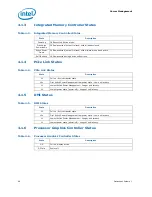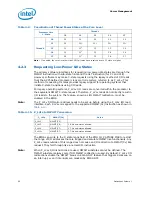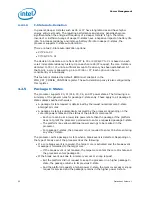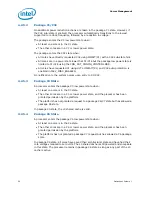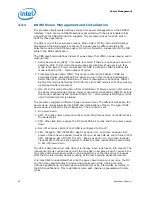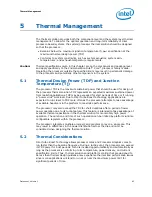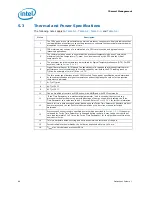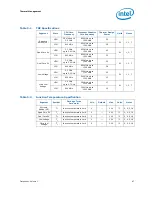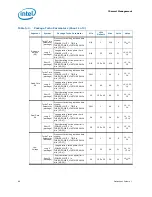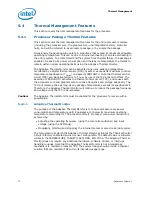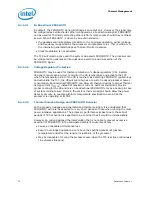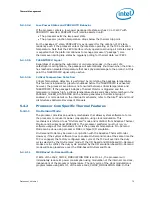
Power Management
60
Datasheet, Volume 1
4.6.5
Intel
®
Graphics Dynamic Frequency
Intel
®
Graphics Dynamic Frequency Technology is the ability of the processor and
graphics cores to opportunistically increase frequency and/or voltage above the
ensured processor and graphics frequency for the given part. Intel
®
Graphics Dynamic
Frequency Technology is a performance feature that makes use of unused package
power and thermals to increase application performance. The increase in frequency is
determined by how much power and thermal budget is available in the package, and
the application demand for additional processor or graphics performance. The
processor core control is maintained by an embedded controller. The graphics driver
dynamically adjusts between P-States to maintain optimal performance, power, and
thermals. The graphics driver will always place the graphics engine in its lowest
possible P-State; thereby, acting in the same capacity as Intel
®
GPMT.
4.6.6
Display Power Savings Technology 6.0 (DPST)
This is a mobile only supported power management feature.
The Intel
®
DPST technique achieves backlight power savings while maintaining a good
visual experience. This is accomplished by adaptively enhancing the displayed image
while decreasing the backlight brightness simultaneously. The goal of this technique is
to provide equivalent end-user-perceived image quality at a decreased backlight power
level.
1. The original (input) image produced by the operating system or application is
analyzed by the Intel
®
DPST subsystem. An interrupt to Intel
®
DPST software is
generated whenever a meaningful change in the image attributes is detected. (A
meaningful change is when the Intel
®
DPST software algorithm determines that
enough brightness, contrast, or color change has occurred to the displaying images
that the image enhancement and backlight control needs to be altered.)
2. Intel
®
DPST subsystem applies an image-specific enhancement to increase image
contrast, brightness, and other attributes.
3. A corresponding decrease to the backlight brightness is applied simultaneously to
produce an image with similar user-perceived quality (such as brightness) as the
original image.
Intel
®
DPST 5.0 has improved the software algorithms and has minor hardware
changes to better handle backlight phase-in and ensures the documented and validated
method to interrupt hardware phase-in.
4.6.7
Automatic Display Brightness (ADB)
This is a mobile only supported power management feature.
Intel
®
Automatic Display Brightness feature dynamically adjusts the backlight
brightness based upon the current ambient light environment. This feature requires an
additional sensor to be on the panel front. The sensor receives the changing ambient
light conditions and sends the interrupts to the Intel Graphics driver. As per the change
in Lux, (current ambient light illuminance), the new backlight setting can be adjusted
through BLC (see section 11). The converse applies for a brightly lit environment.
Intel
®
Automatic Display Brightness increases the back light setting.

